When I decided to use only my 45-years-old Minolta MC 1.7/55 in February I had only one basic idea: I wanted to get out of my comfort zone because I know that I improve my skills much faster in anything if I can’t rely on my routines. And I guess I was also curious how I would fare without all the fancy gear I normally use.

During the project I tried to take pictures everyday and I also created additional challenges for myself: One day I only allowed myself to take 5 pictures and on another I had to photograph in conditions I had little experience in.
1. It was much easier than I anticipated

My idea was that being limited to just one lens would be force me out of my comfort zone because of the technical limitations that come with just one old prime.
I was wrong about that.
I am astonished how far I got with just one normal lens. There were maybe two or three moments when I felt that I lost a picture because all I had was the Minolta. Every other time I managed to work around it’s limitations and there was little to no temptation to break my own rules.
For me this experiment has put the importance of gear for my photography into another perspective: To take pictures I am very happy with I need very little gear. Sharpness is also of little importance: Even that 45-years-old Minolta is good enough for my every need. So gear only really matters for my photography when I want to capture more extreme situations and want to improve on the less important details.
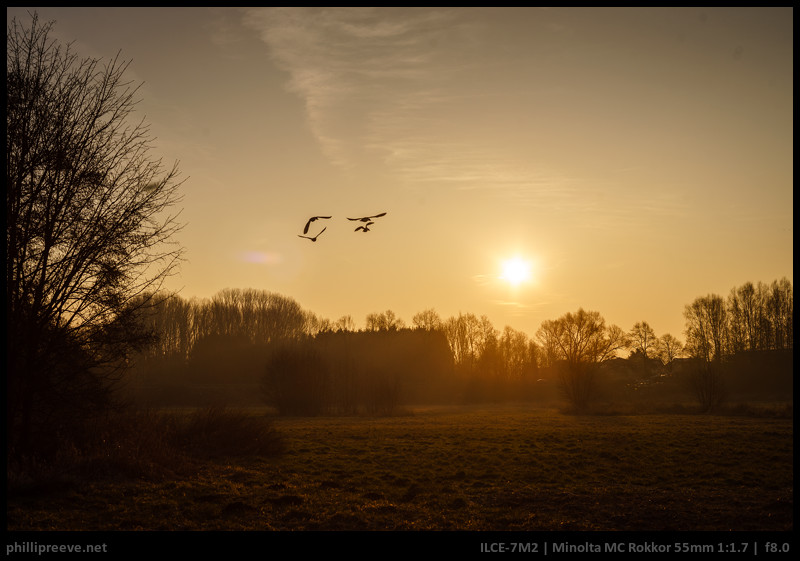
2. Gear distracts me from photography
I usually think about gear a lot and this blog is a symptom of that. I always tell myself that photo gear is more or less a separate hobby from photography for me. After this month I am not that sure about that. My mental capabilities and time are limited like anybody else’s. So any time and thought I invest in gear is lost to other courses like improving my photographic skills.
Through this project I turned my focus away from the gear and on my photographic skills. Through the challenges I experienced situations I would have otherwise judged uninteresting. In effect the images I took in February are much more diverse than in any other month. I am glad I captured them and they also gave me the confidence to shoot more often in less ideal situations.
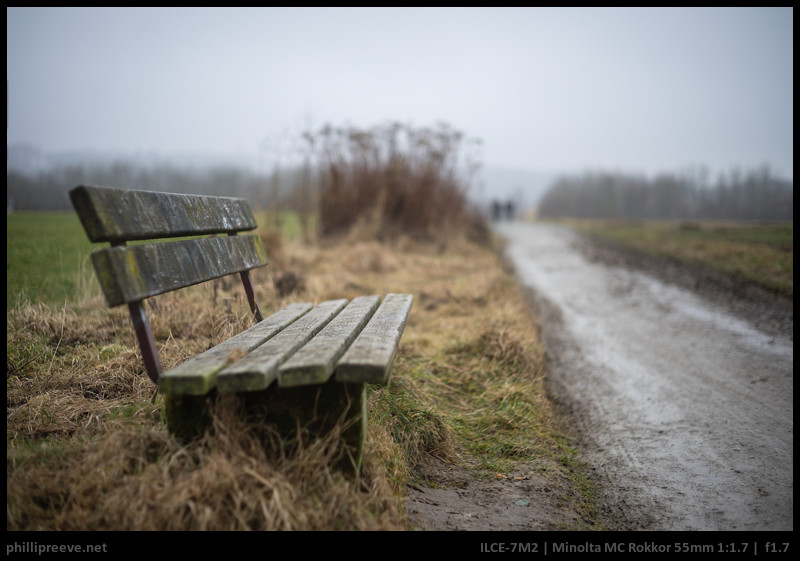
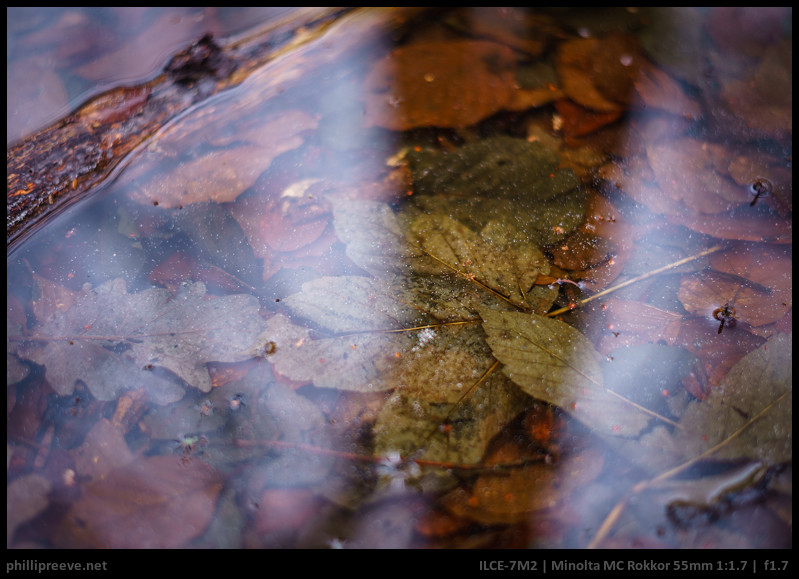



The experience was at times strenuous. Out of my comfort zone I failed on several occasions to come up with a decent picture. Overall though I found it a very rewarding experience. The time I invested in the project and not in gear was very well spent.
So in the future I would like to spend less time with gear and more with photography. If you are a regular reader of this blog: Don’t worry I won’t stop doing my reviews, In the end I enjoy doing those. But I would like to dedicate some of the time I usually spend with gear to grow my photographic skills and make new experiences.
3. I should do more projects
As a hobbyist I am in a luxurious situation: I can photograph whatever I want, free from any external demands. Now the question is: What kind of pictures do I want to take? Over time I have found that I enjoy nature photography the most so over time I have built my routines around it: I try to catch sunrise or sunset and follow my usual paths which I know very well with all their photo opportunities.
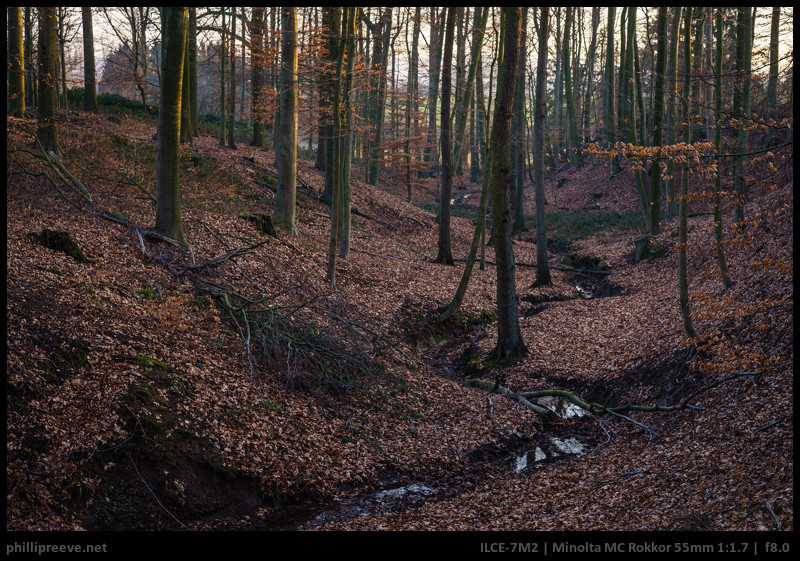
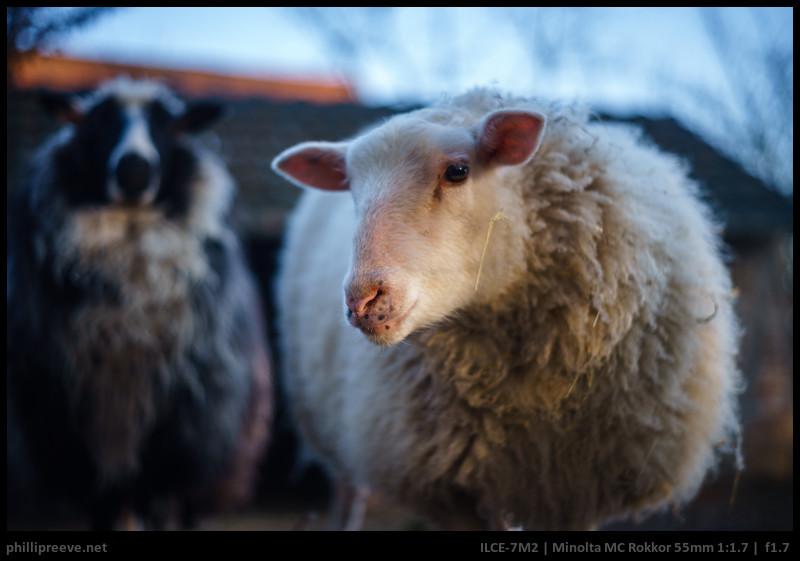
Now this was the first time I actually realized a project and I found that it did something for me: It gave me a reasons to identify my routines and push beyond them to create pictures I hadn’t created before. And that was more rewarding than just doing the same stuff over and over.
I think the project was very important for me because it gave me a goal which I could follow and created some kind of accountability. I also got quite positive feedback from it and I inspired a few people to start something similar. So in the future I will try to do other projects. Those will most likely be less gear related and a bit more focused than this one.



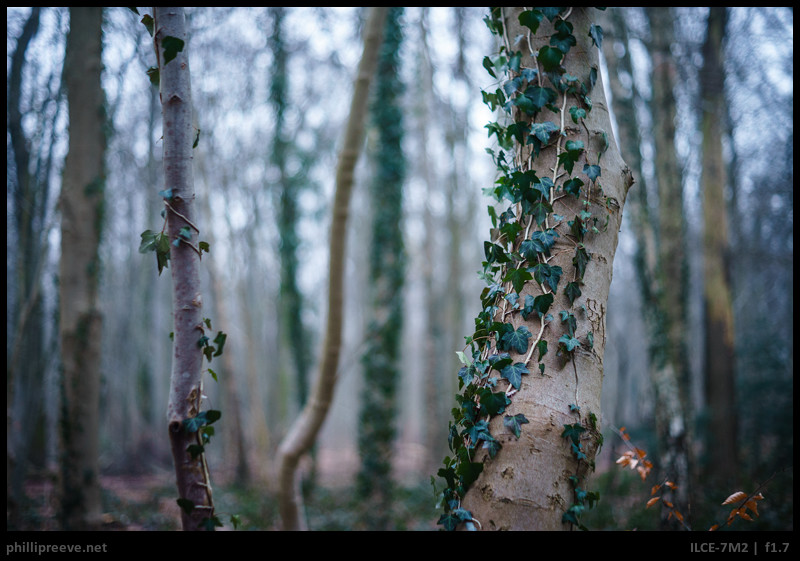
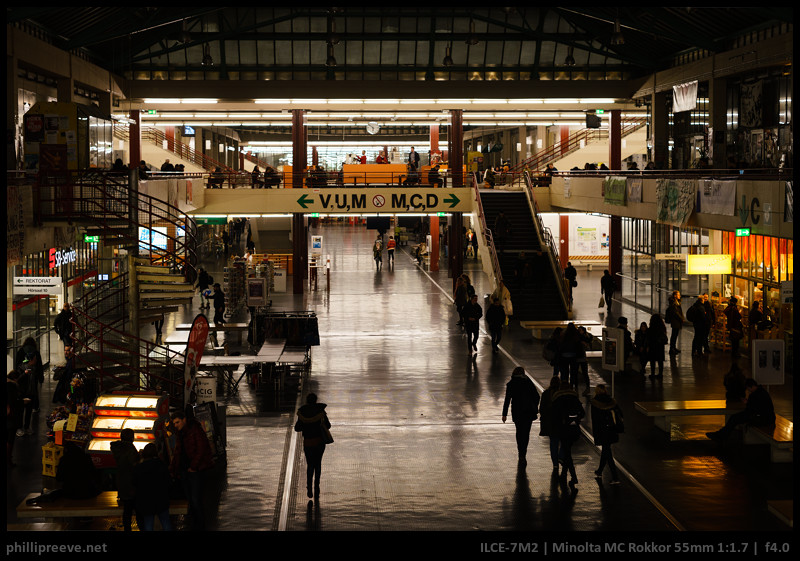
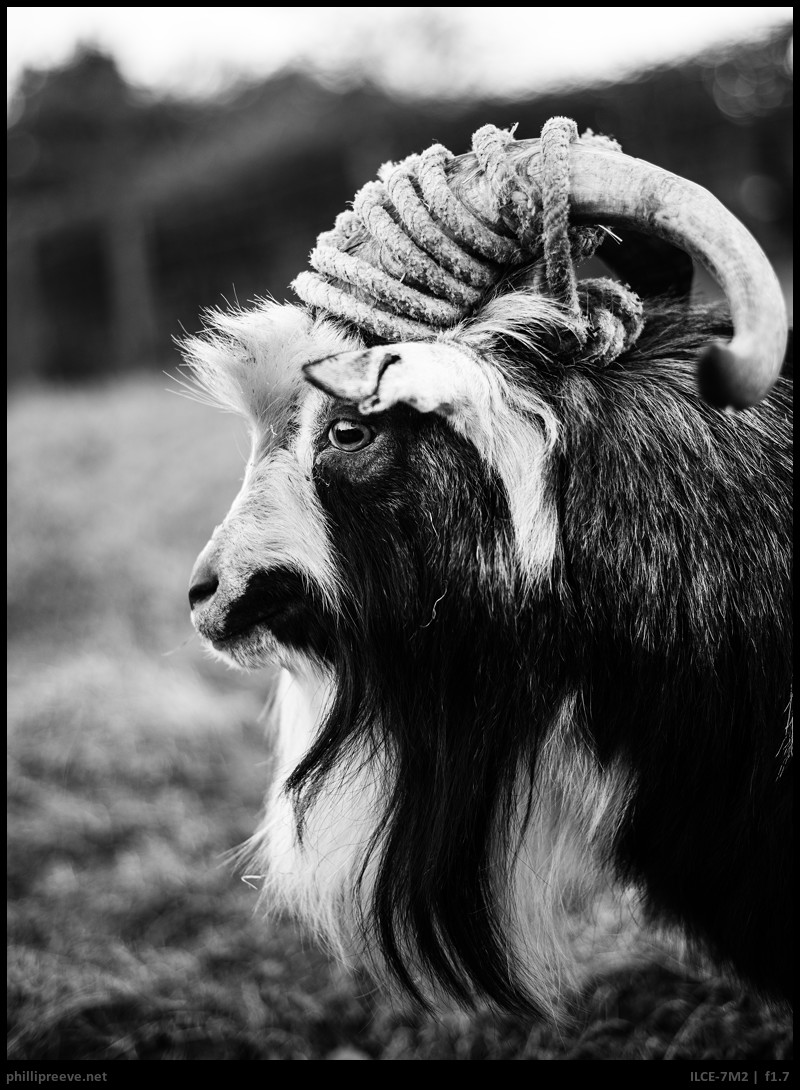
Conclusion
This project has told me a lot and I can only recommend to anyone to give a similar project or any project a try. Sometimes it pays off to shake up your routines a bit.
This site contains affiliate links. If you make a purchase using any of the links marked as affiliate links, I may receive a small commission at no additional cost to you. This helps support the creation of future content.
Latest posts by Phillip Reeve (see all)
- Review: Samyang AF 75/1.8 FE - April 12, 2021
- The FE-List now has 113 lenses on it - March 25, 2021
- 2020 – Year’s end review - December 28, 2020
Hi Phillipe,
I agree with you when you say that gear distracts, I upgraded from A7 to A7ii because of sensor reflections, and I regret a lot. It is much heavier and more expensive so It isn’t the same experience.
For me a7 was perfect but sensor reflections ruined at least 30% of my pictures.
Do you know if exchanging the sensor IR filter in any of the technical services that offers it, solves the sensor reflections issue??
I don’t think it solves the reflection issues, Kolari would certainly list it as a feature of their filter stack replacement
what you mean sensor reflection? i don’t have any problem
Check out my a7 vs a7ii article for illustration
Thank you! This was actually quite inspiring, a little project or direction to work towards not just aimless photo-walks I go on.
Hi,
you usually make use of a tripod with this smaller mirrorless cameras? In particular because of the use of manual lenses. Thanks.
Regards.
Usually not. And it makes no difference if I use a native or manual lens.
I guess that in camera stabilization is enough?
Your blog and the discovery of old lenses are the reasons I bought an used A7 8 months ago. Now I have a brand new A7II and want to do something like your challenge: visit New York only with the Sony 35mm 2.8.
I’d like yo thank you for this blog and all the effort you put on it
You are welcome 🙂
I did exactly the same with my trip to Hamburg. I still think about the pictures I took there. Because I did not have to think about, which lens I should take in my bag, I just took photos with my A7+FE35 that was hanging round my shoulder all day long. I love that combination.
I agree, this is quite inspirational. Right now I feel I could probably try the same thing, for a few weeks at least, with either a Jupiter 8 and close focus adapter or the FE 28/2.
Will also shoot a roll of XP2 in the XD7 before spring is up.
I did learn to shoot with Canon FD lenses, i got 50mm F1.4, 70-210mm F4, and 28mm F2.8 for fraction of price of any Sony lenses. Camera was a6000 and after that a6300. Those teached me more in 6 months than 3 years with kit lens and poor 55-210mm. I can recommend anyone who is starting photography to get some good old prime lenses 😀
Thanks for the insight Phillip. I recently attended a RPS creative photography workshop in Bath, UK, and your thoughts resonate with what we were looking at – Creative results in photography are more about using your brain than the kit. I love my A7ii and the native lenses I have managed to acquire are fantastic, but I also love putting on my old Minolta MD 28mm f2.8. I often venture out for a walk only with this lens. Setting yourself the boundaries of a project helps me to “think photo”.
Attaching my grandfather’s 1951 Leica Elmar 5cm f3.5 to my A7II once it was restored taught me manual photography all over again. I shoot better because of it, no matter what I use. Most of my lenses are manual. The only autofocus I touch is Sony’s Zeiss 55 1.8, because sometimes I need “modern”
Very interesting post, thanks for sharing and congratulations for your work !!
Phillip, many thanks for your stimulus. It was very exiting to follow your posts during February. Keep on the good work!
Hi Phillip,
I hope you don’t stop being a gear head. I count on you.
For me it’s funny, I’ve kind of gone the opposite way. I started out as a film photographer with a view camera, and I only had two lenses for some years. Onward through my development and into digital, just a few lenses, or any old lens, whatever — the composition, light, feeling is the important thing. In recent years, accelerated by the Sony and its adaptability, and the relatively low cost of some vintage lenses — and also your blog and communities like FM — I’ve been inspired to see through unique lenses, and it has changed, I think helped my photography a lot. No more generic zooms for me. But yes, fine, one good prime is OK for a stretch. However, given a choice, I like to have several really nice old and new lenses with me.
Thank you for being a gear head. Don’t change too soon.
Maybe it comes down to stepping out of the comfort zone: When you are comfortable with a view camera and just two lenses a Sony with many lenses is out of your comfort zone and you have to grow as a photographer to adapt to it.
I think I will have to think about this, thanks for the input 🙂
I will openly admit to be a gluttonous, insatiable gearhead – just like Phillip! Seriously, it is hard to resist a new optical experience, and there is always fallout due to bogus lens performance. That is part of the experience.
I am creating a super lighweight hiking kit with two lenses for my handy little a6300 – Sigma’s 60/2.8 and 19/2.8 ART lenses. They are above average performers and I will limit myself to them – and possibly one E-adapted prime – for stills and video using my equally super lighweight Induro carbon fiber tripod for maximum image quality and control.
Thanks for the continuing inspiration, Phillip, in keeping us personally challenged.
That Sigma 2.8/60 is the sharpest lens your can buy for E-mount. I am not really a fan of the 19mm.
But good luck with your kit 🙂
I used only the Sigma 19 for a whole year with my, now old, NEX6. The beauty of having a singular lens is that you become somewhat of an expert on it. From taking the photo itself (mine was sharpest at f6.3) to doing the processing (the sigma 19 requires other color edits etc).
Not a huge fan of the 19’s colors though. I think the pictures coming out of it usually requires a bit too much fiddling.
Your combo of 19 (28mm equiv) + 60 (90mm equiv) will serve you well. It’s basically what i got now for my A7r II and the sort of setup i will keep having when i opt to travel across the world (now it’s the FE16-35 and Contax G90; short + long).
When not travelling around the world i’m fine with old 50’s. If shooting landscapes one can do focus stacking in order to increase sharpness across the focal plane (the most notable problem when shooting a “near to far” landscape with anything above 24mm).
So even if your primary lenses are the 19 + 60 do buy some old MF 50’s and let the creativity flow sometimes. You’ll be glad you did.
I also own an A7m2. To use the lense Minolta MC 1.7/55 do I need a special adapter to be able to use it? If can you provide me a link of where I can buy it? Thanks
here you go: http://amzn.to/2n1PXhN
Yeah, it’s definitely true that for me adding lens character as something I choose and think about has pushed me beyond my own comfort zone. And when I talk about it to other photographers who don’t do that, I can tell that it would push them too. Of course limiting choice if that is what you are used to will be a push beyond a comfort zone if that is what you are used to. But I think there might also be other things going on.
I think there are different levels of seeing as a photographer:
1) the most basic is just seeing well — light, form, texture, nature, humanity — all aspects of how things manifest; seeing clearly through the fog of our pre-conceptions and then framing that as a photo. This is of course essentially important and is independent of equipment. You can do it on a phone. Hard to make a decent photo if you can’t do this.
2) What Ansel Adams called “previsualizing” — you see what is in front of you *as a photograph*, not just bare reality. This includes the fact that it will become two dimensional, tonally compressed, seen through a particular lens and aperture, a compositional frame, maybe as a paper print or glowing on a screen. The success of the image living on after the initial impulse to expose will depend on whether it can work as a flat thing on paper or a screen, and much of that outcome can be pre-planned. There are a lot of factors. Either it will need more work or it won’t, but the point is that the seen-image will be more likely to succeed if it can be visualized as the flat-thing it will become after exposure, processing, printing, posting online, etc.
This previsualization aspect can be simple or complicated, and depend on a lot of factors, like lens choice, Lightroom or Photoshop (or other software) skills and techniques, printing skills, etc. And of course, like the more basic seeing, it all depends on our mental capacity to expand in this way. Some great masters had a relatively simple set of parameters they worked with. Cartier-Bresson didn’t use a lot of lenses and wasn’t a darkroom technician, but he surely saw that tone, form, geometry, humanity all work together in a certain way when made in a frame and had to live or die as a flat photograph. But then other masters have added a few or a lot more dimensions to their technique. Lens character can be one of these dimensions.
It becomes a question of whether these extra dimensions give us more juice and inspiration, or detract from the overall balancing act of creating a vision.
My guess, Phillip, is that you get a lot of “juice” and inspiration from the lens-technology side of the work, which is obviously really important in your photography and shows in your photos very clearly. It may be — I don’t know — that you hit a point where the complexity all that choice interfered with the power of purer simplicity. We only have so much mental bandwidth to apply while we are working.
This is a great experiment to try. I like to practice forcing myself into 1 focal length per day on vacations. Up until a month ago, I owned only primes, so I would bring 3 or 4 on a trip but only bring 1 out with me each day. I missed shots but it forced me to get out of autopilot and try something new. For example, one of my favorite landscape shots from a trip to New Zealand was not shot on a tripod with one of my wide angle lenses but with a 55mm, handheld, snapped on the way to breakfast.
Vielen Dank für deine Gedanken und Inspiration!
Gern geschehen 🙂
Phillip,
The top two glass shelves of your lens cabinet look like they’re straining under the load of those lenses. Time you off-load some of those lenses to your readers 🙂
Only kiddin’
I tried to sell some stuff lately but I am not good at letting go of lenses 😉
Hi Phillip,
as usual great idea and article.
I agree 100% with this challange/project-it is like fasting few days a month- it is hard, but it is good for you and your brain.
As an owner of hundreds of manual focus lenses I was and I am on a search for that ONE ore two lenses to bring with you, the FL I am comfortable with, best combination of handling and optical capabilities. (I started with a test of thirty two 50mm and later 55mm lenses) even I find 40ish FL the best compromise.
I guess your 55mm f1.7 Minolta is not your best lens ,but the beauty of it is to challange your self and take the best pictures out of it,right?
So thanks again for a great idea, my first lens: Chinon Multi coated 55mm f1.4…
My best lens is probably the Voigtlander 1.7/35 but as you guessed the MC55 was more of a challenge
Great article as always !!! Thank you for writing it.
Phillip
Great pictures. Are most of your nature shots near your home or do you have to travel to get them?
Mostly close to home 🙂
When I bought my A7 about (3) years ago, this full frame mirrorless camera gave me the option to use any legacy manual focus lens I wanted and this was great for me as a personal camera. I shoot professionally w/ digital Nikon cameras with the typical zoom lenses which serves me well. I’m a people photographer and I have found that using the 28mm lens for events, as well as, 50mm lens for portraits, is ideal for me. I found that 90% of my photography could be covered comfortably with these (2) lenses. So, I carry this set combo before I leave to go on assignment. I have collected several set combos. I have the Nikon 28mm 2.8 ais/ 55mm 1.2 ai, the Yashica ML 28mm 2.8/ Carl Zeiss 50mm 1.4 c/y and my favorite combo, the Minolta MD 28mm 2.8/ Leitz 1946 Summitar 5cm (50mm) 2.0. I also carry a cheap flash and very cheap transmitter/ receiver for any needed light modification because sometimes available light is just not good enough. Those are my most go to setup combos. As strange as this may sound, I usually know which setup to carry with me in my very small old canvas Domke bag with (1) extra battery for the camera and (4) AA’s for the flash, without too much thought because I’m aware of the various renderings of each combo. Thanks Phillip for making me aware of the Minolta MC/MD lenses. By the way, the Minolta 28mm 2.8 with the (7) lens elements, is outstanding for people photography. This lens is very cheap found in mint condition. I picked up (2) lenses in mint condition for $50 for the set. This lens is a definite sleeper…!!!
“2. Gear distracts me from photography”
this seems to be one reason why so many people switch to Leica and keeping on with only one or two very good lenses.
More is not always better 😉
Nice one lens project – and some very nice results too.
I’m fond of the Minolta MC 55/1.7 as a portrait lens on APS-C, either on an X-Pro or on the little Ricoh GXR with the A12 Mount M. It’s sharp enough where it needs to be and I find the bokeh very pleasing.
Hi Phillip,
Hopefully this isn’t too off topic, but how did you like using the XD-7? I’m considering pairing that camera (never had the chance to handle one) with the 55mm f/1.7 you used.
Thank you,
Will
It is a much ore primitive tool than modern cameras with less god grip and primitive exposure metering but it is also a lot of fun to use.